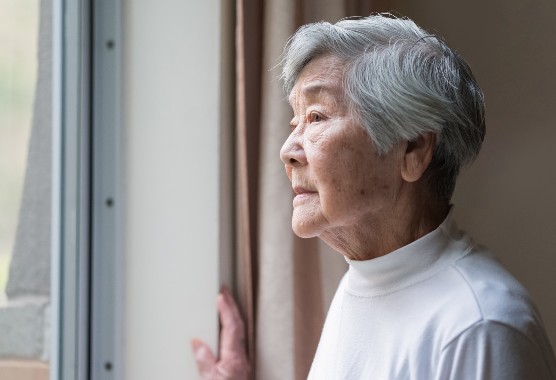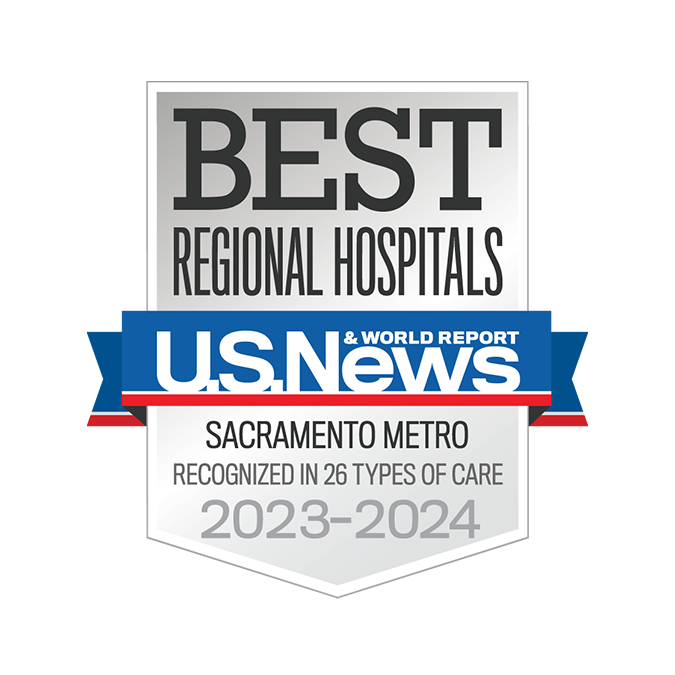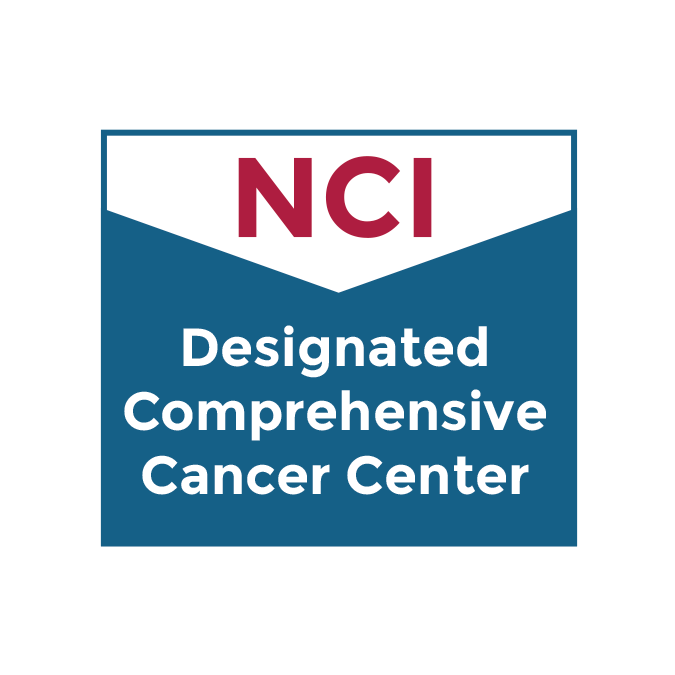Bone Cancer
Our bone cancer specialists provide expert, coordinated care for all types of bone tumors. We focus on protecting your long-term health and quality of life.
Medically reviewed by Lor Randall, M.D. on July 20, 2023.

Expertise to Diagnose Bone Cancer
Oncologists at UC Davis Comprehensive Cancer Center provide advanced care for pediatric and adult patients with bone cancer.
Experience is important when seeking care for bone cancer. Our highly trained specialists are skilled in recognizing the symptoms, making an accurate diagnosis and selecting the appropriate treatment.
Types of Bone Cancer
Bone cancers are tumors that develop in your bones. Large tumors can make your bones more likely to break. Tumors in your spine can also cause pain, weakness or paralysis if they press on your spinal cord.
The most common types of bone cancer we treat at UC Davis Comprehensive Cancer Center include:
- Metastatic bone cancer spreads to the bone from another location in your body, such as the breast, lung or prostate. This is the most common type of bone cancer in adults.
- Osteosarcoma starts in the bones (primary bone cancer). Though it is the most common type of primary bone cancer, it is quite rare. Osteosarcoma affects about 1,000 people each year, half of whom are children and teens.
- Chondrosarcoma starts in the soft tissue at the end of your bones (cartilage). Most people with chondrosarcoma are over age 20.
- Ewing sarcomas are tumors that start in the bones or soft tissues. Children and teens are the most likely age group to develop Ewing tumors.
Bone Cancer Symptoms
Bone cancer can occur in any bone but is more common in certain areas. Metastatic bone cancer typically affects the spine, hip, upper leg, upper arm, ribs and skull. Osteosarcomas in young people typically develop in the upper arm or knee. Ewing tumors are most common in the hip, ribs, shoulder blades and legs.
Symptoms of bone cancer can look like common injuries or typical aging. It’s important to talk to your physician if your symptoms don’t go away or worsen.
Common Symptoms
Symptoms of bone cancer include:
- Pain
- Bone fractures (breaks)
- Swelling
Emergency Symptoms
A bone tumor that presses on your spine can cause paralysis. Seek emergency care if you experience:
- Back pain that travels down one or both legs
- Loss of urinary or stool control (incontinence)
- Numbness in your legs or abdomen
- Weakness in your legs
Causes and Risk Factors of Bone Cancer
Cancer occurs due to genetic changes (mutations) that allow cells to grow uncontrollably. Genetic mutations can happen randomly or from exposure to harmful chemicals or radiation. You can also inherit cancer-causing genetic mutations.
It is unclear why primary bone cancers form or why some cancers spread and cause metastatic bone cancer. Several factors increase your risk for primary bone cancer. They vary depending on the cancer type.
Age
Older or younger age may increase your risk for certain types of bone cancers. Children and teens are more likely to develop Ewing sarcoma. Osteosarcoma is most common between ages 10 and 30. Older age is a risk factor for chondrosarcoma.
Biological Sex
Ewing sarcoma and osteosarcoma are more common in males.
Height
Children with osteosarcoma are typically taller than their peers.
Inherited Cancer Syndromes
Syndromes are groups of symptoms or disorders that occur together. People with Li-Fraumeni syndrome may develop osteosarcoma, breast cancer and brain tumors. Osteosarcoma may also occur in people with retinoblastoma (a rare eye cancer).
Noncancerous Bone Diseases
Certain noncancerous bone tumors and bone diseases can turn into chondrosarcoma or osteosarcoma.
Past Radiation Therapy
If you received radiation therapy for another type of cancer, especially at a young age, you have a higher chance of developing osteosarcoma.
Diagnosing Bone Cancer
Our physicians review your symptoms and medical history. We perform a physical exam to look for swelling.
If we suspect bone cancer, we may order tests, including:
- Medical imaging: X-ray, CT, and MRI tests help us see bone tumors and measure their size. Your physician may also recommend a PET or bone scan to find out if cancer has spread to other areas of your body.
- Biopsy: A biopsy is a procedure to collect a sample of the tumor for analysis. Your physician may insert a needle into the tumor or perform a surgical biopsy. To ensure you don’t feel pain, you receive local anesthesia to numb the area or general anesthesia to help you sleep through the biopsy. We send the tissue sample to a laboratory to make the diagnosis.
Bone cancer biopsies require experience and planning. In some cases, we may remove the tumor at the same time as the biopsy. Our surgeons are highly skilled and take great care to protect your future health.
Bone Cancer Treatments at UC Davis Health
UC Davis Health has received designations from the National Cancer Institute, National Comprehensive Cancer Network and other leading organizations. These recognitions reflect our commitment to innovative research, leading-edge treatments and high-quality patient care.
UC Davis Comprehensive Cancer Center includes adult bone cancer specialists and pediatric oncologists. They provide care to people of all ages and have deep knowledge of the latest treatments and available clinical trials. If you have metastatic bone cancer, we coordinate seamlessly with your primary cancer team.
Bone cancer treatments we provide include:
Bone Cancer Surgery
Surgery is the most common treatment for primary bone cancers. Our goal is to remove the tumor and a margin of surrounding tissue. This approach decreases the chance that the cancer will return.
Bone Strengthening Medications
Bone strengthening medications, such as bisphosphonates, are the leading treatment for metastatic bone cancer. These medications help prevent bone fractures and compression of your spinal cord.
Chemotherapy
Chemotherapy is a common treatment for some types of primary bone cancer. You may receive chemotherapy before surgery to shrink a tumor. You could also get it after surgery, with or without radiation therapy, to destroy any remaining cancer cells.
Immunotherapy and Targeted Therapy
Immunotherapy drugs help your immune system identify and attack cancer cells. Targeted therapy drugs recognize cancer cells and destroy them.
Radiation Therapy
Radiation therapy uses beams of energy to destroy cancer cells. Children with Ewing sarcoma may have radiation therapy as a primary treatment or as an add-on to surgery. For other bone cancers, radiation therapy may be helpful after surgery, to destroy any remaining cancer cells, or in place of surgery, to control the cancer when surgery is not an option.
"Key Statistics for Osteosarcoma," American Cancer Society, https://www.cancer.org/cancer/types/osteosarcoma/about/key-statistics.html
Primary bone cancer accounts for
<1%Of all cancers
Source: American Cancer Society: Key Statistics About Bone Cancer
Request an Appointment
Our cancer specialists provide thorough evaluations and personalized treatment plans. Learn more about how to make an appointment at UC Davis Comprehensive Cancer Center.
Patients
New Patient Referral Office
916-734-5959
UC Davis Health Referring Physicians
For providers in UC Davis Medical Group or our Cancer Care Network
Physician Referral Center
916-734-5959
External Referring Physicians
For providers who are external clinicians
Referral Office
800-770-9261

Ranked among the nation’s best hospitals
A U.S. News & World Report best hospital in cardiology, heart & vascular surgery, diabetes & endocrinology, ENT, geriatrics, neurology & neurosurgery, and pulmonology & lung surgery.

Ranked among the nation’s best children’s hospitals
U.S. News & World Report ranked UC Davis Children’s Hospital among the best in pediatric nephrology, orthopedics*, and pulmonology & lung surgery. (*Together with Shriners Children’s Northern California)

Ranked Sacramento’s #1 hospital
Ranked Sacramento’s #1 hospital by U.S. News, and high-performing in aortic valve surgery, back surgery (spinal fusion), COPD, colon cancer surgery, diabetes, gynecological cancer surgery, heart arrhythmia, heart failure, kidney failure, leukemia, lymphoma & myeloma, lung cancer surgery, pacemaker implantation, pneumonia, prostate cancer surgery, stroke, TAVR, cancer, orthopedics, gastroenterology & GI surgery, and urology.

The nation’s highest nursing honor
UC Davis Medical Center has received Magnet® recognition, the nation’s highest honor for nursing excellence.

World-class cancer care
One of ~59 U.S. cancer centers designated “comprehensive” by the National Cancer Institute.

A leader in health care equality
For the 13th consecutive year, UC Davis Medical Center has been recognized as an LGBTQ+ Healthcare Equality Leader by the educational arm of America’s largest civil rights organization.

